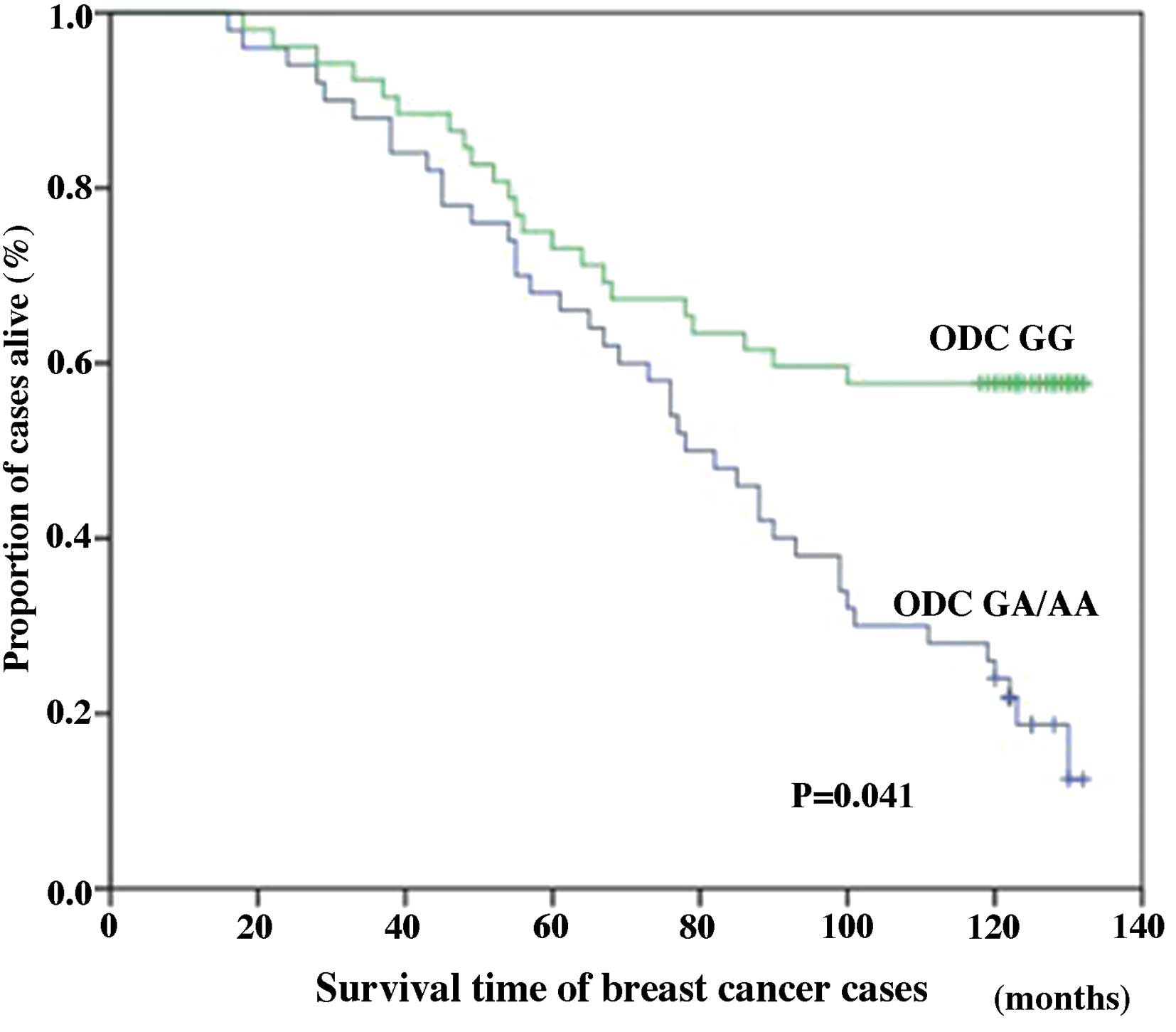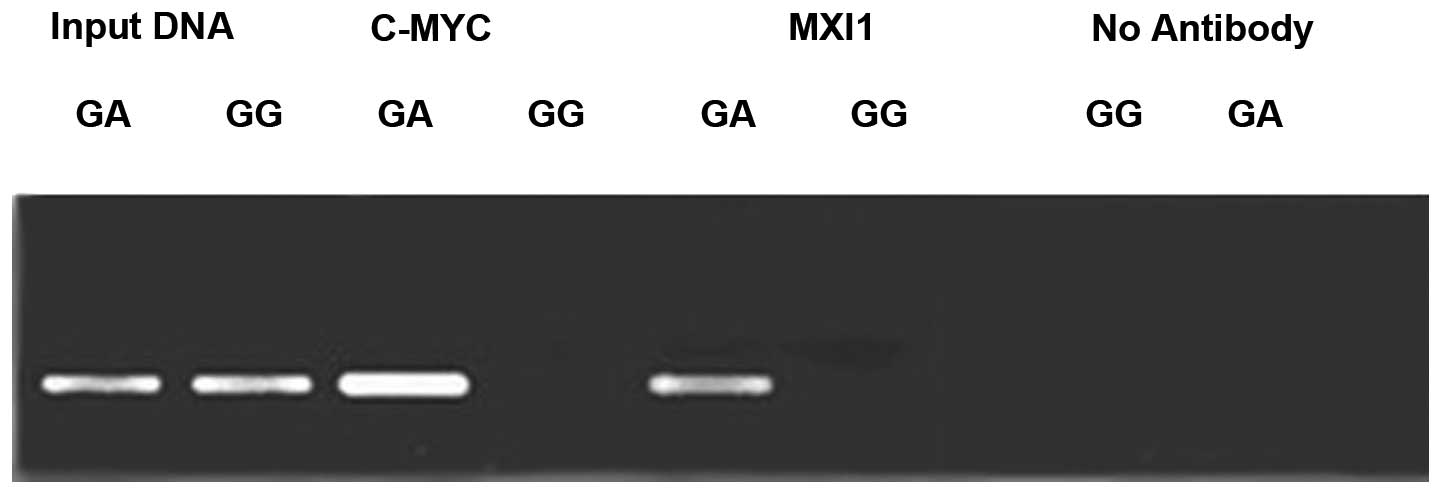|
1
|
DeSantis C, Siegel R, Bandi P and Jemal A:
Breast cancer statistics, 2011. CA Cancer J Clin. 61:409–418. 2011.
View Article : Google Scholar : PubMed/NCBI
|
|
2
|
Gerner EW and Meyskens FL Jr: Polyamines
and cancer: old molecules, new understanding. Nat Rev Cancer.
4:781–792. 2004. View
Article : Google Scholar : PubMed/NCBI
|
|
3
|
Wallace HM: The physiological role of the
polyamines. Eur J Clin Invest. 30:1–3. 2000. View Article : Google Scholar : PubMed/NCBI
|
|
4
|
Babbar N, Ignatenko NA, Casero RA Jr and
Gerner EW: Cyclooxygenase-independent induction of apoptosis by
sulindac sulfone is mediated by polyamines in colon cancer. J Biol
Chem. 278:47762–47775. 2003. View Article : Google Scholar : PubMed/NCBI
|
|
5
|
Takigawa M, Enomoto M, Nishida Y, Pan HO,
Kinoshita A and Suzuki F: Tumor angiogenesis and polyamines:
alpha-difluoromethylornithine, an irreversible inhibitor of
ornithine decarboxylase, inhibits B16 melanoma-induced angiogenesis
in ovo and the proliferation of vascular endothelial cells in
vitro. Cancer Res. 50:4131–4138. 1990.PubMed/NCBI
|
|
6
|
Gödderz D, Schäfer E, Palanimurugan R and
Dohmen RJ: The N-terminal unstructured domain of yeast ODC
functions as a transplantable and replaceable ubiquitin-independent
degron. J Mol Biol. 407:354–367. 2011. View Article : Google Scholar : PubMed/NCBI
|
|
7
|
Chen Y, Megosh LC, Gilmour SK, Sawicki JA
and OBrien TG: K6/ODC transgenic mice as a sensitive model for
carcinogen identification. Toxicol Lett. 116:27–35. 2000.
View Article : Google Scholar : PubMed/NCBI
|
|
8
|
Young L, Salomon R, Au W, Allan C, Russell
P and Dong Q: Ornithine decarboxylase (ODC) expression pattern in
human prostate tissues and ODC transgenic mice. J Histochem
Cytochem. 54:223–229. 2006. View Article : Google Scholar : PubMed/NCBI
|
|
9
|
Lan L, Trempus C and Gilmour SK:
Inhibition of ornithine decarboxylase (ODC) decreases tumor
vascularization and reverses spontaneous tumors in ODC/Ras
transgenic mice. Cancer Res. 60:5696–5703. 2000.PubMed/NCBI
|
|
10
|
Guo Y, Cleveland JL and OBrien TG:
Haploinsufficiency for odc modifies mouse skin tumor
susceptibility. Cancer Res. 65:1146–1149. 2005. View Article : Google Scholar : PubMed/NCBI
|
|
11
|
Grinberg AV, Hu CD and Kerppola TK:
Visualization of Myc/Max/Mad family dimers and the competition for
dimerization in living cells. Mol Cell Biol. 24:4294–4308. 2004.
View Article : Google Scholar : PubMed/NCBI
|
|
12
|
Walhout AJ, Gubbels JM, Bernards R, van
der Vliet PC and Timmers HT: c-Myc/Max heterodimers bind
cooperatively to the E-box sequences located in the first intron of
the rat ornithine decarboxylase (ODC) gene. Nucleic Acids Res.
25:1493–1501. 1997. View Article : Google Scholar : PubMed/NCBI
|
|
13
|
Funakoshi-Tago M, Sumi K, Kasahara T and
Tago K: Critical roles of Myc-ODC axis in the cellular
transformation induced by myeloproliferative neoplasm-associated
JAK2 V617F mutant. PLoS One. 8:e528442013. View Article : Google Scholar : PubMed/NCBI
|
|
14
|
Guo Y, Harris RB, Rosson D, Boorman D and
OBrien TG: Functional analysis of human ornithine decarboxylase
alleles. Cancer Res. 60:6314–6317. 2000.PubMed/NCBI
|
|
15
|
Hubner RA, Muir KR, Liu JF, Logan RF,
Grainge MJ and Houlston RS: Members of the UKCAP Consortium:
Ornithine decarboxylase G316A genotype is prognostic for colorectal
adenoma recurrence and predicts efficacy of aspirin
chemoprevention. Clin Cancer Res. 14:2303–2309. 2008. View Article : Google Scholar : PubMed/NCBI
|
|
16
|
Zell JA, Ziogas A, Ignatenko N, et al:
Associations of a polymorphism in the ornithine decarboxylase gene
with colorectal cancer survival. Clin Cancer Res. 15:6208–6216.
2009. View Article : Google Scholar : PubMed/NCBI
|
|
17
|
Theriault RL, Carlson RW, Allred C, et al:
National Comprehensive Cancer Network: Breast cancer, version
3.2013: featured updates to the NCCN guidelines. J Natl Compr Canc
Netw. 11:753–760. 2013.PubMed/NCBI
|
|
18
|
Harris L, Fritsche H, Mennel R, et al:
American Society of Clinical Oncology: American Society of Clinical
Oncology 2007 update of recommendations for the use of tumor
markers in breast cancer. J Clin Oncol. 25:5287–5312. 2007.
View Article : Google Scholar : PubMed/NCBI
|
|
19
|
Singletary SE, Allred C, Ashley P, et al:
Revision of the American Joint Committee on Cancer staging system
for breast cancer. J Clin Oncol. 20:3628–3636. 2002. View Article : Google Scholar : PubMed/NCBI
|
|
20
|
Leen S, Steven VL, Marie DA, et al: Study
assessing the quality of quantification of estrogen receptor
protein expression by immunohistochemistry and gene expression in
breast cancer. Patholog Res Int. 2014:3726532014.PubMed/NCBI
|
|
21
|
Casero RA and Pegg AE: Polyamine
catabolism and disease. Biochem J. 421:323–338. 2009. View Article : Google Scholar : PubMed/NCBI
|
|
22
|
Thomas T and Thomas TJ: Polyamine
metabolism and cancer. J Cell Mol Med. 7:113–126. 2003. View Article : Google Scholar : PubMed/NCBI
|
|
23
|
Wallace HM and Fraser AV: Inhibitors of
polyamine metabolism: review article. Amino Acids. 26:353–365.
2004. View Article : Google Scholar : PubMed/NCBI
|
|
24
|
Wallace HM and Fraser AV: Inhibitors of
polyamine metabolism: review article. Amino Acids. 26:353–365.
2004. View Article : Google Scholar : PubMed/NCBI
|
|
25
|
Levin VA, Uhm JH, Jaeckle KA, et al: Phase
III randomized study of postradiotherapy chemotherapy with
alpha-difluoromethylornithine-procarbazine,
N-(2-chloroethyl)-N-cyclohexyl-N-nitrosurea, vincristine (DFMO-PCV)
versus PCV for glioblastoma multiforme. Clin Cancer Res.
6:3878–3884. 2000.PubMed/NCBI
|
|
26
|
Deng X and Pei D: Ornithine decarboxylase
and glutamate decarboxylase 65 as prognostic markers of gallbladder
malignancy: a clinicopathological study in benign and malignant
lesions of the gallbladder. Mol Med Rep. 7:413–418. 2013.PubMed/NCBI
|
|
27
|
Wilson SM, Hawel L III, Pastorian KE and
Byus CV: A stable, inducible, dose-responsive ODC overexpression
system in human cell lines. Biochim Biophys Acta. 1732:103–110.
2005. View Article : Google Scholar : PubMed/NCBI
|
|
28
|
Love RR, Astrow SH, Cheeks AM and
Havighurst TC: Ornithine decarboxylase (ODC) as a prognostic factor
in operable breast cancer. Breast Cancer Res Treat. 79:329–334.
2003. View Article : Google Scholar : PubMed/NCBI
|
|
29
|
Luqman S: Ornithine decarboxylase: a
promising and exploratory candidate target for natural products in
cancer chemoprevention. Asian Pac J Cancer Prev. 13:2425–2427.
2012. View Article : Google Scholar : PubMed/NCBI
|
|
30
|
Martinez ME, OBrien TG, Fultz KE, et al:
Pronounced reduction in adenoma recurrence associated with aspirin
use and a polymorphism in the ornithine decarboxylase gene. Proc
Natl Acad Sci USA. 100:7859–7864. 2003. View Article : Google Scholar : PubMed/NCBI
|
|
31
|
Brown I, Halliday S, Greig H, et al:
Genetic polymorphism in ornithine decarboxylase and risk of breast
cancer. Fam Cancer. 8:307–311. 2009. View Article : Google Scholar : PubMed/NCBI
|
|
32
|
Xu LP, Sun Y, Li W, Mai L, Guo YJ and Fan
QX: MYC and MXI1 protein expression: potential prognostic
significance in women with breast cancer in China. Oncol Res Treat.
37:118–123. 2014. View Article : Google Scholar : PubMed/NCBI
|














